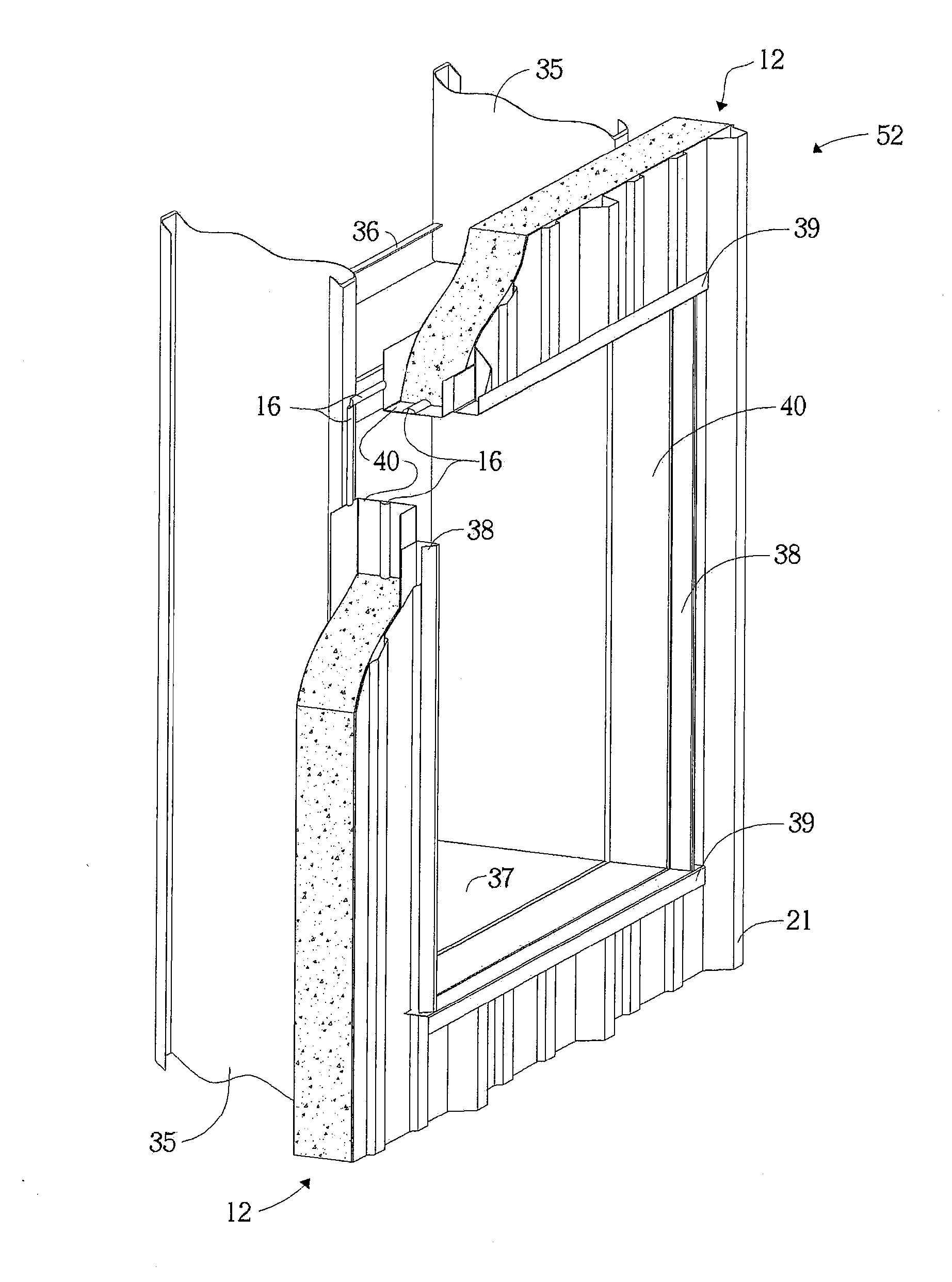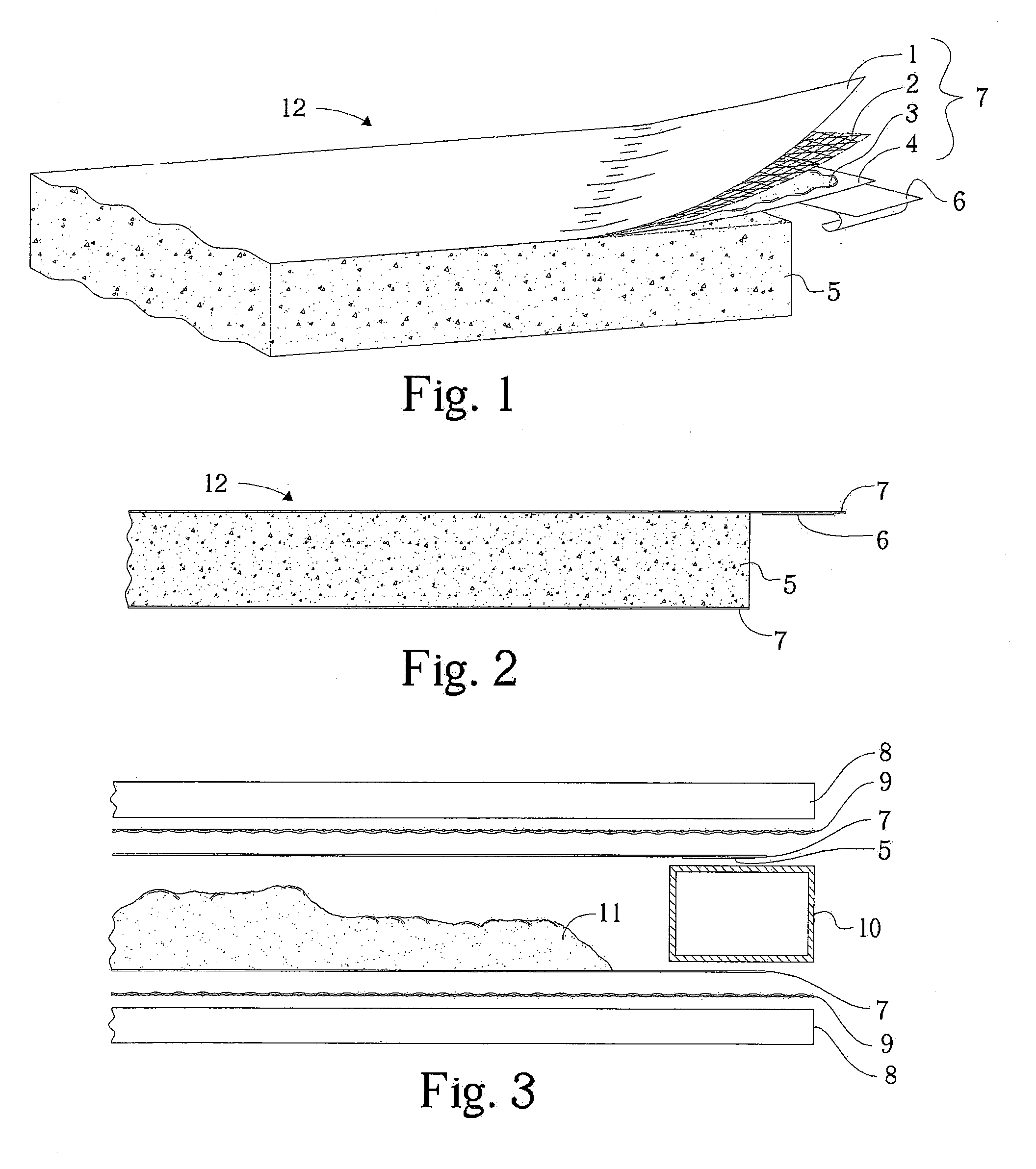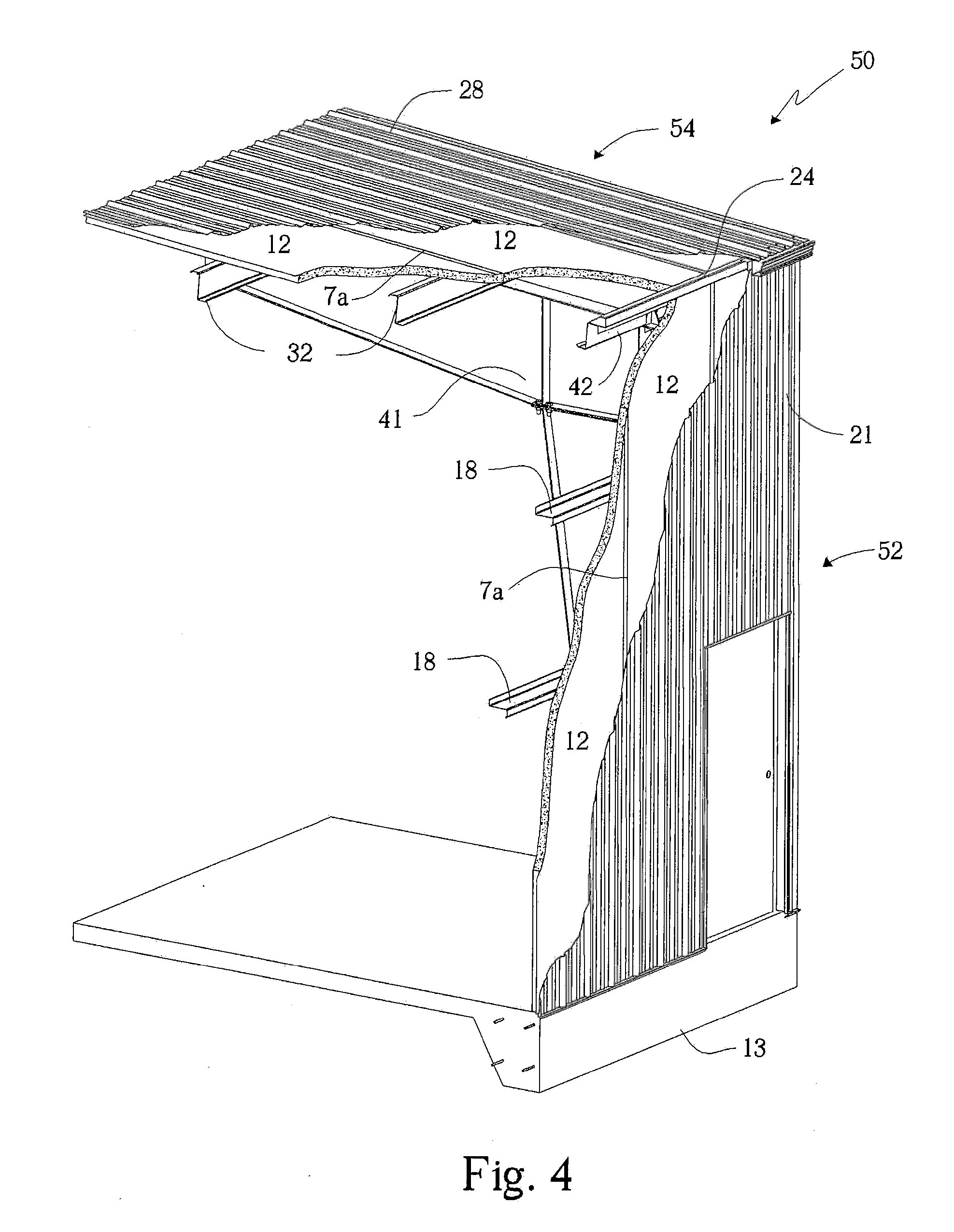Composite insulating building panel and system and method for attaching building panels
a technology of composite panels and building panels, which is applied in the field of composite panels, can solve the problems of degrading the thermal performance of the insulation, reducing and not providing a continuous insulation envelope, so as to increase the esthetics of the panel, reduce the amount of blistering, and increase the strength and durability of the composite panel
- Summary
- Abstract
- Description
- Claims
- Application Information
AI Technical Summary
Benefits of technology
Problems solved by technology
Method used
Image
Examples
Embodiment Construction
[0017]Turning now to the drawings, wherein like reference characters designate identical or corresponding parts, and more particularly to FIG. 1 thereof, a composite insulation panel 12 embodying aspects of the invention includes a facing 7 disposed on one side, or, alternatively, both sides, of a foam core 5. Top facing 7 of the composite panel 12 is shown in FIG. 1 pulled back to expose its components. Facing 7 may comprise, but is not limited to, a vapor impervious skin 1, preferably between 2.5 and 400 micron, beyond which a reinforcing layer may be redundant. By way of a specific example the skin 1 is comprised of metalized polypropylene. Other suitable materials include a wide range of polymeric materials; for example, polystyrene, polyethylene, polypropylene, polyurethane, and polyvinylchloride. In some cases, for costs savings, a facing material can become increasingly thin to a point at which it is no longer a vapor impervious skin. Thinner skins can be more cost effective,...
PUM
| Property | Measurement | Unit |
|---|---|---|
| Thickness | aaaaa | aaaaa |
| Dimension | aaaaa | aaaaa |
| Thermal properties | aaaaa | aaaaa |
Abstract
Description
Claims
Application Information
 Login to View More
Login to View More - R&D
- Intellectual Property
- Life Sciences
- Materials
- Tech Scout
- Unparalleled Data Quality
- Higher Quality Content
- 60% Fewer Hallucinations
Browse by: Latest US Patents, China's latest patents, Technical Efficacy Thesaurus, Application Domain, Technology Topic, Popular Technical Reports.
© 2025 PatSnap. All rights reserved.Legal|Privacy policy|Modern Slavery Act Transparency Statement|Sitemap|About US| Contact US: help@patsnap.com



